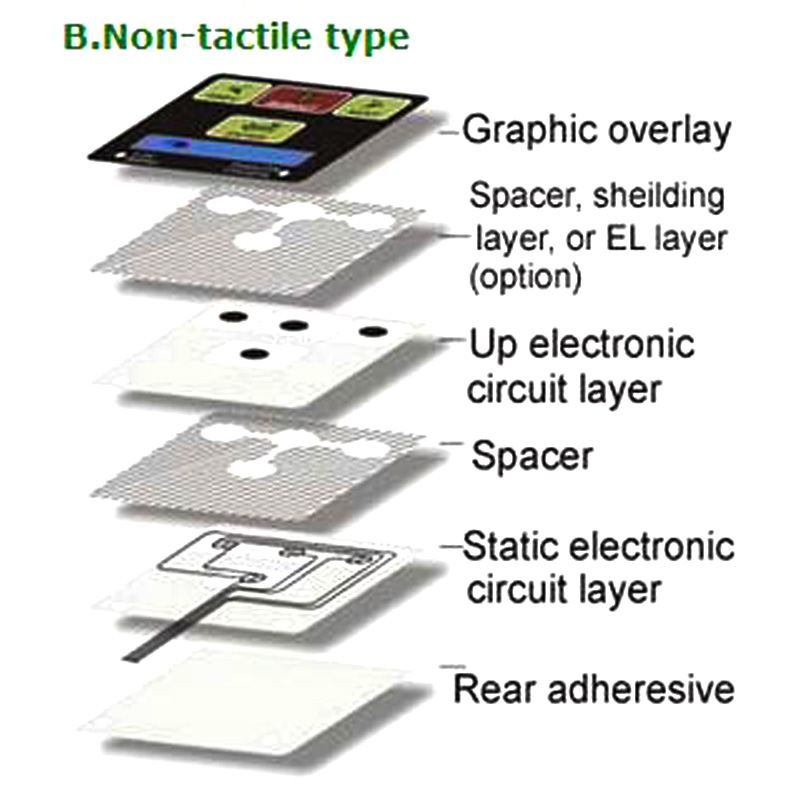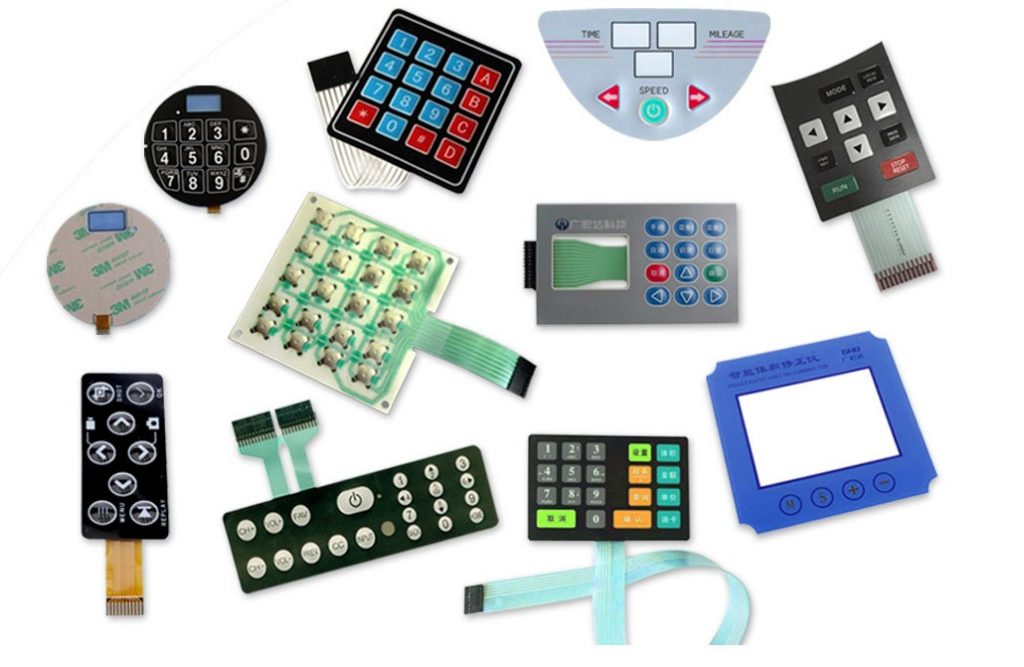The Manufacturing Process Behind Membrane Switch: What You Required to Know
The production procedure behind membrane layer switches over combines mindful style, product choice, and high quality control. It begins with understanding the details of membrane button style and proceeds with numerous phases, consisting of material options and printing methods. Each phase plays an essential duty in making certain capability and resilience. The intricacies of layer building and construction and the strenuous testing requirements might reveal insights that are not promptly obvious. What exists past these foundational components?
Understanding Membrane Switch Design
Although membrane switches may appear basic at very first look, their layout includes elaborate factors to consider that assure functionality and sturdiness. The style procedure begins with a complete understanding of customer needs, including the interface's desired application and ecological variables. Functional designs is a crucial element, as the format has to facilitate simplicity of use while making certain that responsive comments satisfies user expectations.Moreover, the layering of elements, such as graphic overlays, glue layers, and conductive traces, have to be exactly crafted. membrane switch. This layered setup not just affects the switch's responsiveness but likewise influences its long life. Interest is offered to the sealing methods utilized to protect against moisture and dirt, which might endanger performance. Additionally, layout considerations include visual appeals, where color plans and aesthetic clarity boost user experience. Ultimately, the design of membrane changes equilibriums functionality, individual experience, and toughness, making certain that they fulfill the demands of different applications properly
Materials Utilized in Membrane Switch Over Manufacturing
When selecting materials for membrane layer button production, it is important to contemplate both performance and durability. The key products consist of polyester and polycarbonate movies, which give flexibility and stamina. These films are typically coated with adhesive to guarantee proper bonding to substrates. Conductive inks, generally made up of silver or carbon, are essential for producing electrical links within the button, permitting reliable operation.Additionally, a safety layer, such as a hard coat, is regularly used to improve scrape resistance and long life. The choice of backing material, such as acrylic or foam, can substantially impact the switch's tactile feeling and overall user experience. Additionally, different ecological variables, consisting of temperature level and moisture, need to lead product choice to assure peak performance in details applications. Ultimately, the appropriate combination of products adds to the membrane switch's capability and life-span, making notified selections necessary for makers.
The Printing Process: Creating Video and Text
The printing process in membrane layer switch manufacturing plays a substantial duty in producing high-quality graphics and message. Different visuals design strategies are employed to guarantee aesthetic allure and functionality, while mindful ink selection methods are necessary for longevity and efficiency. Recognizing these components is fundamental for achieving best results in membrane switch style.
Graphic Design Techniques
Graphic design strategies play a necessary role in the printing process of membrane layer switches, as they specify how graphics and message will eventually appear on the last item. Efficient graphic style includes the strategic usage of layouts, font styles, and shades to improve readability and aesthetic appeal. Developers frequently utilize vector graphics for scalability, making sure that images continue to be sharp at numerous dimensions. Furthermore, attention to contrast and alignment is important, as it affects user interaction and aesthetic quality. The incorporation of branding elements, such as logos, have to be managed with like maintain brand stability. Generally, thoughtful graphic design strategies contribute substantially to the functionality and attractiveness of membrane buttons, affecting customer experience and item efficiency.
Ink Choice Methods
Picking the proper ink is necessary for attaining the wanted aesthetic quality and sturdiness in membrane button manufacturing. Different ink kinds are made use of, consisting of solvent-based, water-based, and UV-curable inks. Each kind uses distinctive qualities, such as resistance, versatility, and attachment to environmental factors. Solvent-based inks are frequently favored for their toughness and lively shades, while water-based inks are much more eco pleasant yet might have restrictions in bond. UV-curable inks supply fast curing and durable performance. Furthermore, color matching techniques assure that the selected inks straighten with design specs. Eventually, the selection of ink need to take into consideration elements such as application technique, substratum compatibility, and end-use requirements to accomplish remarkable cause membrane layer button graphics and text.
Layer Construction and Setting Up

Material Selection Process
A careful option of materials is necessary in the manufacturing procedure of membrane buttons, as it straight influences functionality and toughness. The main products utilized consist of polyester, polycarbonate, and various conductive inks. Polyester is typically favored for its excellent resistance to chemicals and abrasion, making it suitable for extreme environments. Polycarbonate, on the other hand, offers superior clarity and effect resistance, which is valuable for applications needing exposure and effectiveness. Conductive inks, commonly composed of silver or carbon, are important for creating trusted electrical paths. Furthermore, the choice of glue materials affects the total stability of the button - membrane switch. Examining elements such as ecological exposure, tactile responses, and visual requirements guides manufacturers in choosing the ideal materials for their details applications
Layer Bond Strategies
Adhering layers in membrane layer button building is an essential procedure that assures performance and durability. Different attachment methods are used to protect optimal bonding between find this layers, which normally consist of making use of adhesives, heat, and stress. Pressure-sensitive adhesives (PSAs) are frequently made use of for their convenience of application and immediate bonding abilities. Furthermore, thermal bonding techniques can be applied, where warmth is used to trigger adhesive buildings, securing a solid bond. The choice of attachment approach mainly relies on the products entailed and the details application demands of the membrane layer button. Appropriate alignment and uniform application of adhesives are vital to prevent defects, securing the switch runs properly throughout its designated lifespan.
High Quality Control Measures
Ensuring quality assurance throughout the layer building and assembly of membrane buttons is necessary for maintaining efficiency and reliability. This process normally includes numerous critical actions, consisting of extensive evaluations at each phase of manufacturing. Suppliers make use of advanced screening approaches, such as peel tests and attachment evaluations, to verify the honesty of layer bonds. In addition, aesthetic evaluations are performed to determine any flaws in printing or material disparities. Environmental conditions, such as temperature level and humidity, are meticulously kept an eye on to ensure optimal curing and adhesion. Regular calibration of devices helps keep exact production requirements. By applying these high quality control actions, producers can substantially lower the threat of product failure, assuring that the last membrane switches fulfill the required requirements and client expectations.
Examining and High Quality Control Measures

Technologies in Membrane Layer Switch Innovation
As improvements in innovation remain to advance, membrane layer switches are benefiting from cutting-edge growths that boost their capability and customer experience. One notable innovation is the assimilation of capacitive touch technology, which permits even more receptive and intuitive user interfaces. This change not only enhances appearances yet likewise reduces mechanical deterioration, expanding the lifespan of the switches.Additionally, innovations in visuals overlay materials have find out this here led to enhanced resilience and resistance to ecological factors such as wetness and UV light. These products currently provide enhanced clearness and illumination, more raising the visual appeal.Furthermore, the incorporation of smart innovation is changing membrane changes into interactive control panels, enabling connectivity with IoT gadgets. This connectivity fosters a seamless individual experience, leading the way for applications in different industries, from health care to consumer electronics. Collectively, these advancements setting membrane layer switches as crucial components in modern gadget layout.
Often Asked Inquiries
For how long Does the Membrane Switch Production Process Take?
The duration of the membrane switch manufacturing process can vary significantly. Aspects such as intricacy, materials utilized, and manufacturing quantity impact timelines, with regular production varying from a few days to numerous weeks for completion.
What Are the Typical Applications for Membrane Buttons?
Membrane switches are commonly used in different sectors, consisting of vehicle controls, home devices, medical gadgets, and customer electronic devices (membrane switch). Their convenience and resilience make them excellent for applications needing easy to use interfaces and trusted performance in varied settings
Can Membrane Layer Switches Over Be Personalized for Specific Requirements?

What Is the Life-span of a Normal Membrane Switch Over?
The see it here life expectancy of a regular membrane layer switch differs, yet usually, it varies from 1 to 5 million cycles. Elements such as use, setting, and worldly high quality considerably influence toughness and general performance over time.

Are Membrane Changes Eco-friendly?
The environmental kindness of membrane layer changes differs. Some materials used might not be recyclable, while others can be eco-friendly. The total influence depends on manufacturing products and techniques, necessitating mindful consideration throughout selection and disposal. The manufacturing process behind membrane layer changes combines mindful style, product choice, and top quality control. It starts with recognizing the intricacies of membrane button design and proceeds via various stages, including product choices and printing strategies. When selecting products for membrane switch production, it is essential to ponder both performance and durability. A mindful option of products is necessary in the production procedure of membrane layer switches, as it directly influences capability and longevity. The choice of bond technique greatly depends on the products entailed and the certain application demands of the membrane button.